Region and layer-specific expression of GABAA receptor isoforms and KCC2 in developing cortex
- PMID: 38894703
- PMCID: PMC11184147
- DOI: 10.3389/fncel.2024.1390742
Region and layer-specific expression of GABAA receptor isoforms and KCC2 in developing cortex
Abstract
Introduction: γ-Aminobutyric acid (GABA) type A receptors (GABAARs) are ligand-gated Cl-channels that mediate the bulk of inhibitory neurotransmission in the mature CNS and are targets of many drugs. During cortical development, GABAAR-mediated signals are significantly modulated by changing subunit composition and expression of Cl-transporters as part of developmental processes and early network activity. To date, this developmental evolution has remained understudied, particularly at the level of cortical layer-specific changes. In this study, we characterized the expression of nine major GABAAR subunits and K-Cl transporter 2 (KCC2) in mouse somatosensory cortex from embryonic development to postweaning maturity.
Methods: We evaluated expression of α1-5, β2-3, γ2, and δ GABAAR subunits using immunohistochemistry and Western blot techniques, and expression of KCC2 using immunohistochemistry in cortices from E13.5 to P25 mice.
Results: We found that embryonic cortex expresses mainly α3, α5, β3, and γ2, while expression of α1, α2, α4, β2, δ, and KCC2 begins at later points in development; however, many patterns of nuanced expression can be found in specific lamina, cortical regions, and cells and structures.
Discussion: While the general pattern of expression of each subunit and KCC2 is similar to previous studies, we found a number of unique temporal, regional, and laminar patterns that were previously unknown. These findings provide much needed knowledge of the intricate developmental evolution in GABAAR composition and KCC2 expression to accommodate developmental signals that transition to mature neurotransmission.
Keywords: GABA-A receptors; GABAA subtypes; Western blot (WB); cortical development; developmental expression pattern; immunohistochemistry (IHC); potassium chloride co-transporter 2 (KCC2).
Copyright © 2024 Zavalin, Hassan, Zhang, Khera and Lagrange.
Conflict of interest statement
The authors declare that the research was conducted in the absence of any commercial or financial relationships that could be construed as a potential conflict of interest.
Figures

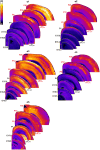
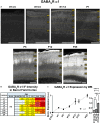
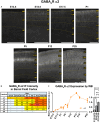
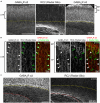
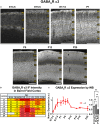

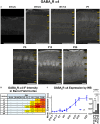
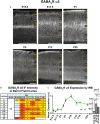
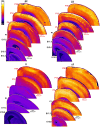
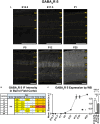
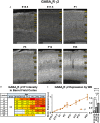
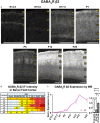
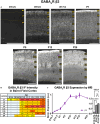

Similar articles
-
Immunohistochemical distribution of 10 GABAA receptor subunits in the forebrain of the rhesus monkey Macaca mulatta.J Comp Neurol. 2020 Oct 15;528(15):2551-2568. doi: 10.1002/cne.24910. Epub 2020 Apr 3. J Comp Neurol. 2020. PMID: 32220012 Free PMC article.
-
GABA(A) receptors: immunocytochemical distribution of 13 subunits in the adult rat brain.Neuroscience. 2000;101(4):815-50. doi: 10.1016/s0306-4522(00)00442-5. Neuroscience. 2000. PMID: 11113332
-
Altered cortical GABAA receptor composition, physiology, and endocytosis in a mouse model of a human genetic absence epilepsy syndrome.J Biol Chem. 2013 Jul 19;288(29):21458-21472. doi: 10.1074/jbc.M112.444372. Epub 2013 Jun 6. J Biol Chem. 2013. PMID: 23744069 Free PMC article.
-
Contribution of Smoothened Receptor Signaling in GABAergic Neurotransmission and Chloride Homeostasis in the Developing Rodent Brain.Front Physiol. 2021 Dec 10;12:798066. doi: 10.3389/fphys.2021.798066. eCollection 2021. Front Physiol. 2021. PMID: 34955901 Free PMC article. Review.
-
Striatal Chloride Dysregulation and Impaired GABAergic Signaling Due to Cation-Chloride Cotransporter Dysfunction in Huntington's Disease.Front Cell Neurosci. 2022 Jan 14;15:817013. doi: 10.3389/fncel.2021.817013. eCollection 2021. Front Cell Neurosci. 2022. PMID: 35095429 Free PMC article. Review.
References
Grants and funding
LinkOut - more resources
Full Text Sources
Molecular Biology Databases

